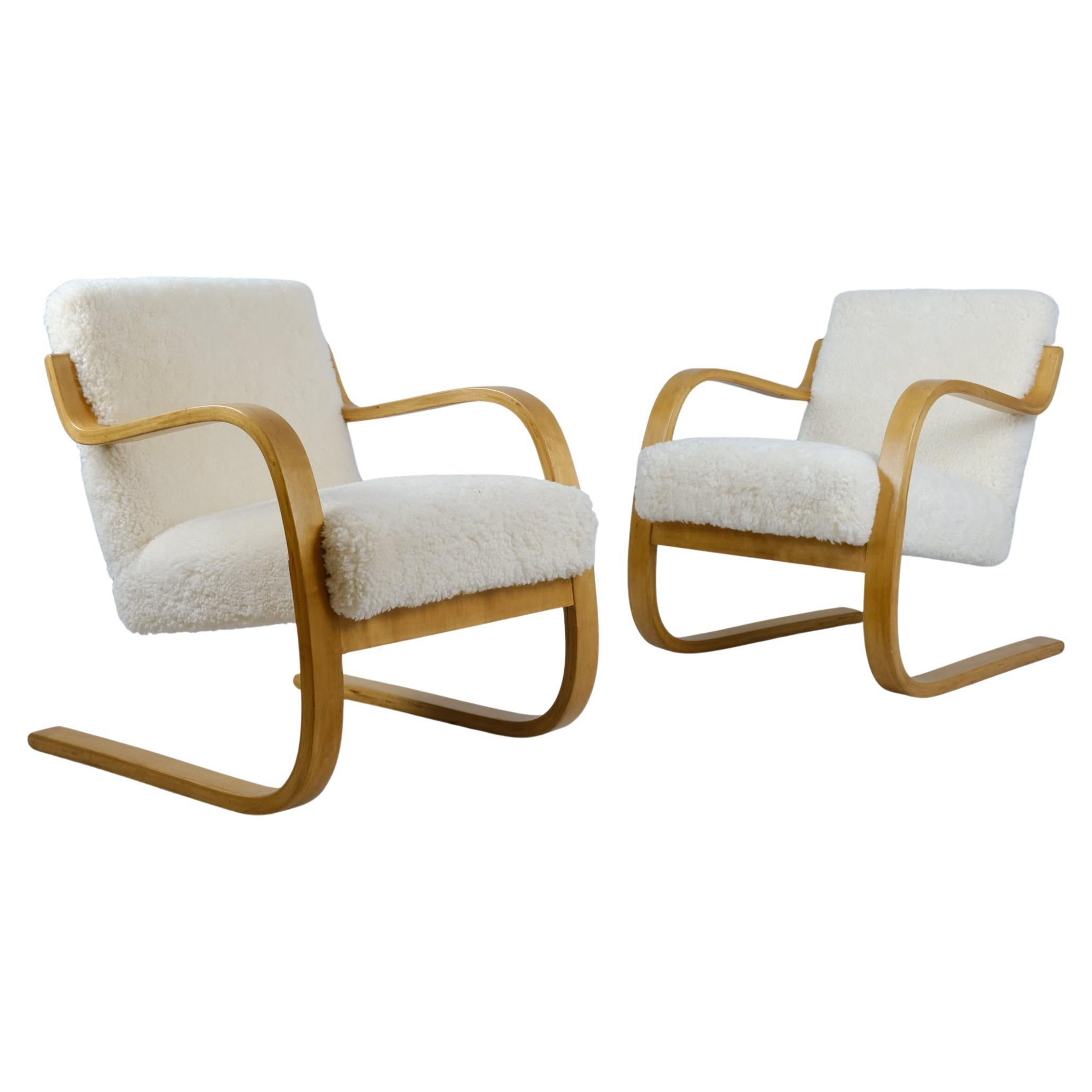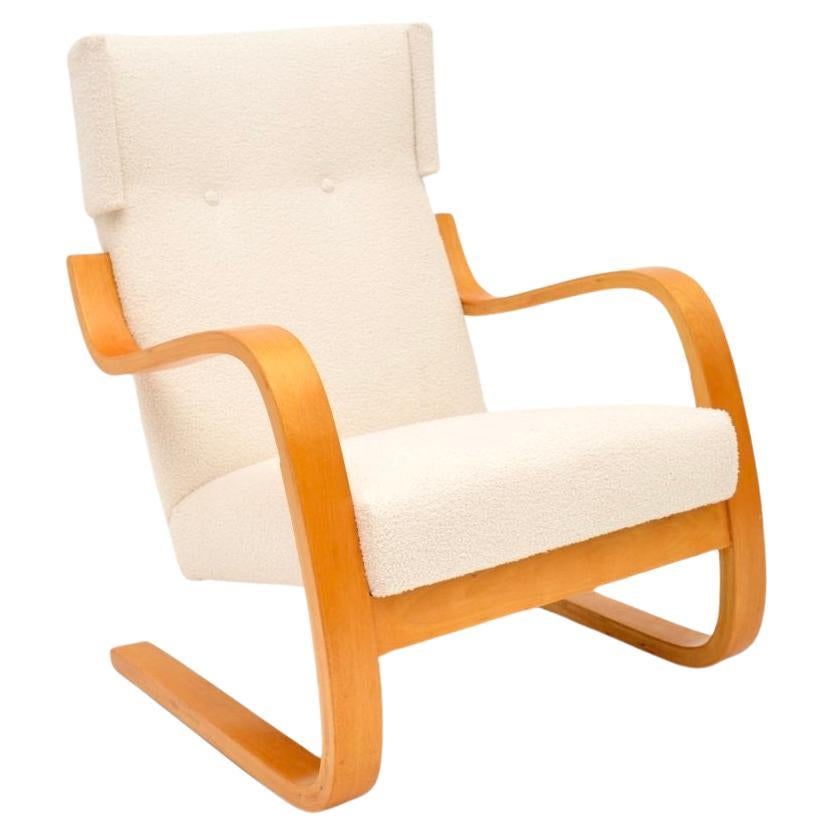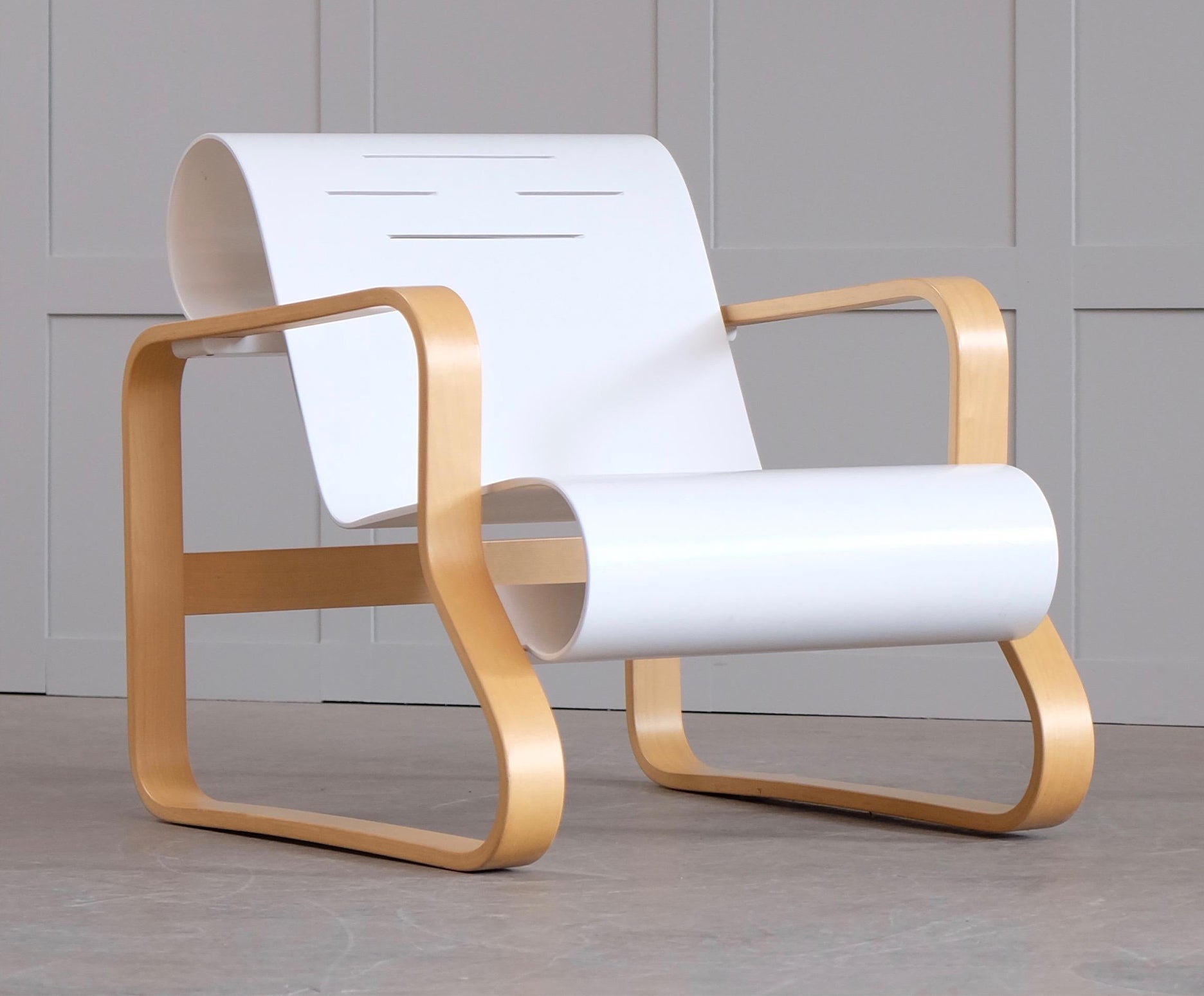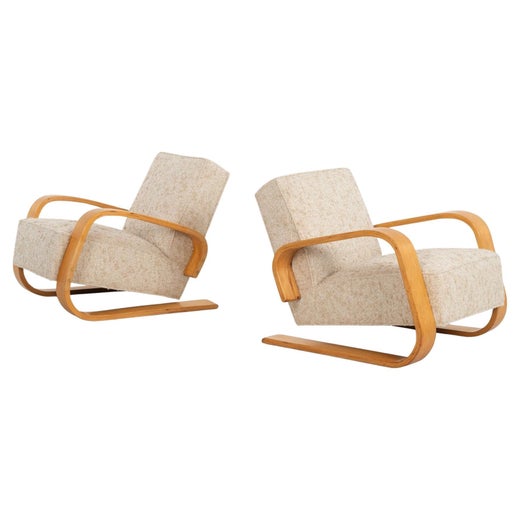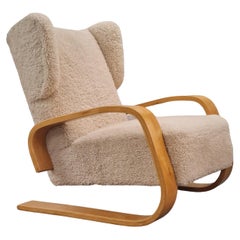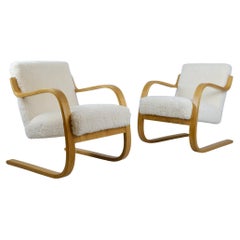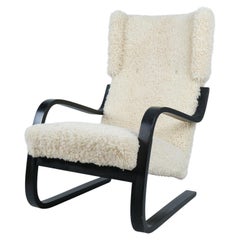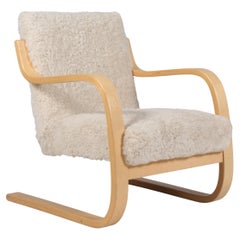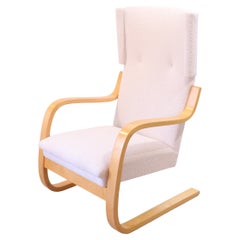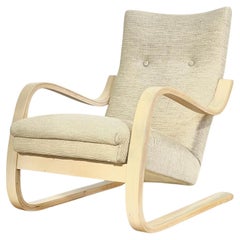Alvar Aalto Padded Paimio 44 Lounge Chair in Birch & Sheepskin, Artek 1950s
About the Item
- Creator:
- Design:
- Dimensions:Height: 26.38 in (67 cm)Width: 24.81 in (63 cm)Depth: 33.47 in (85 cm)Seat Height: 16.54 in (42 cm)
- Style:Scandinavian Modern (Of the Period)
- Materials and Techniques:
- Place of Origin:
- Period:
- Date of Manufacture:1950s
- Condition:Reupholstered. Refinished. Wear consistent with age and use. The overall impression is good. A few scratches here and there, consistent with age and use. The chair has been reupholstered in high quality honey colored sheepskin. The paint was removed from the arms, as this chair was painted before.
- Seller Location:Helsinki, FI
- Reference Number:1stDibs: LU6346238635192
Paimio Armchair
Created in 1932, the Paimio armchair, or Armchair 41, was intended to help people breathe easier. Finnish architect and furniture maker Alvar Aalto (1898–1976) — in collaboration with his first wife, Aino — designed a tuberculosis sanatorium and all of the facility’s furnishings, including the armchair, in the Finnish city of Paimio, after winning the commission in an architecture competition.
During the mid-to-late 1920s, Aalto was working with bentwood processes and producing resilient, easily storable furniture that could be tucked away when not in use. His pioneering efforts yielded malleable wood for shaping the material into sculptural furniture — stackable seating defined by sleek curved contours, such as the Stool 60 or the Paimio armchair, a masterpiece for which the Aaltos are widely known.
Paimio Sanatorium was constructed with functionalism in mind. The building and its furnishings were designed to house patients suffering from tuberculosis, a bacterial infection that primarily attacks the lungs. At the time (this was prior to the use of antibiotics), sanatorium staffers were focused on getting the afflicted outside in the sunshine and fresh air. As tuberculosis was considerably contagious and is spread from coughing and sneezing, the surfaces in the Aaltos' building had to be easily disinfected and aired-out. These concerns extended to the design of the Paimio armchair.
For the chair’s frame, the couple opted to use Finland’s native birchwood, which is strong and inexpensive and felt warmer and more organic than the tubular steel found in similarly shaped pieces, like the Wassily chair designed by Marcel Breuer.
The laminated wood loops to form the arms, legs and a pair of flat skids while its sculptural seat and back, built from a single piece of thin plywood, look as if they are suspended and are angled to support ailing sitters in their efforts to breathe.
An integral part of the revolutionary building, the Aaltos' Paimio armchair earned the couple acclaim as furniture makers. Branded “the first soft wooden chair,” the project inspired countless other designers, among them Eero Saarinen and Charles and Ray Eames, in its simplicity and striking form.
Artek, which the Aaltos helped cofound, currently manufactures and distributes Alvar and Aino's wood furniture designs, including many light fixtures and furniture from the Paimio Sanatorium.
Alvar Aalto
An architect and designer, Alvar Aalto deserves an immense share of the credit for bringing Scandinavian modernism and Nordic design to a prominent place in the global arena. In both his buildings and his vintage furniture — which ranges from chairs, stools, tables and lighting to table- and glassware — Aalto’s sensitivity to the natural world and to organic forms and materials tempered the hardness of rationalist design.
Relatively few Aalto buildings exist outside Finland. (Just four exist in the United States, and only one — the sinuous 1945 Baker House dormitory at M.I.T. — is easily visited.) International attention came to Aalto, whose surname translates to English as “wave,” primarily through his furnishings.
Instead of the tubular metal framing favored by the Bauhaus designers and Le Corbusier, Aalto insisted on wood. His aesthetic is best represented by the Paimio armchair, developed with his wife, Aino Aalto, in 1930 as part of the overall design of a Finnish tuberculosis sanatorium.
Comfortable, yet light enough to be easily moved by patients, the Paimio chair’s frame is composed of two laminated birch loops; the seat and back are formed from a single sheet of plywood that scrolls under the headrest and beneath the knees, creating a sort of pillow effect. Aalto’s use of plywood had an enormous influence on Charles and Ray Eames, Arne Jacobsen, Marcel Breuer and others who later came to the material.
Concerned with keeping up standards of quality in the production of his designs, Aalto formed the still-extant company Artek in 1935, along with Aino, whose glass designs were made by the firm. In the latter medium, in 1936 the Aaltos together created the iconic, undulating Savoy vase, so-called for the luxe Helsinki restaurant for which the piece was designed.
Artek also produced Aalto pendants and other lighting designs, many of which — such as the Angel’s Wing floor lamp and the Beehive pendant — incorporate a signature Aalto detail: shades made of concentric enameled-metal rings graduated down in diameter. The effect of the technique is essential Alvar Aalto: at once precise, simple, and somehow poetic.
Find a collection of vintage Alvar Aalto stools, vases, dining tables and other furniture on 1stDibs.
- ShippingRetrieving quote...Shipping from: Helsinki, Finland
- Return Policy
More From This Seller
View AllVintage 1940s Finnish Scandinavian Modern Lounge Chairs
Sheepskin, Birch
Vintage 1950s Finnish Mid-Century Modern Armchairs
Fabric, Birch
Vintage 1950s Finnish Mid-Century Modern Armchairs
Metal
Vintage 1940s Finnish Mid-Century Modern Armchairs
Birch, Sheepskin
Vintage 1930s Finnish Mid-Century Modern Armchairs
Fabric, Birch
Vintage 1940s Finnish Scandinavian Modern Armchairs
Wool, Birch
You May Also Like
Vintage 1960s Finnish Scandinavian Modern Lounge Chairs
Sheepskin, Birch
Vintage 1970s Finnish Mid-Century Modern Armchairs
Bouclé, Bentwood
Mid-20th Century Finnish Mid-Century Modern Armchairs
Bouclé
Vintage 1940s Finnish Mid-Century Modern Lounge Chairs
Upholstery, Birch
Vintage 1950s Finnish Scandinavian Modern Armchairs
Fabric, Birch
Vintage 1960s Finnish Mid-Century Modern Lounge Chairs
Bouclé, Birch
Read More
The Very Modern Love Story of Mid-Century Design Duo Alvar and Aino Aalto
A power couple before the term existed, the influential pair made work that still resonates today.
What Makes Scandinavian Modernism and Nordic Design So Irresistible?
Andrew Duncanson, founder of the Stockholm- and London-based gallery Modernity, weighs in on the masters of mid-century furniture and decorative arts.



